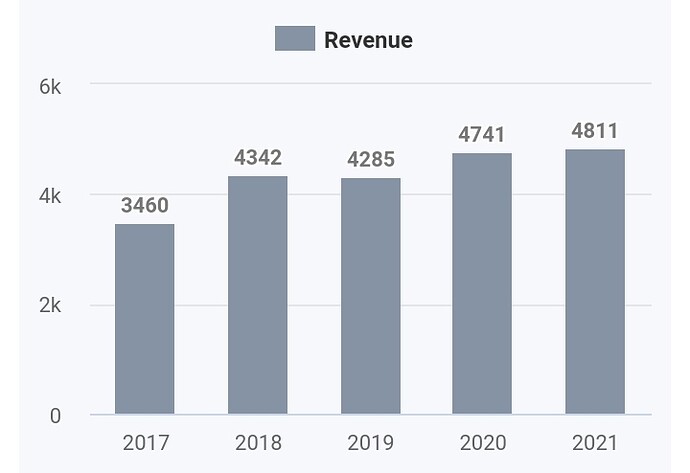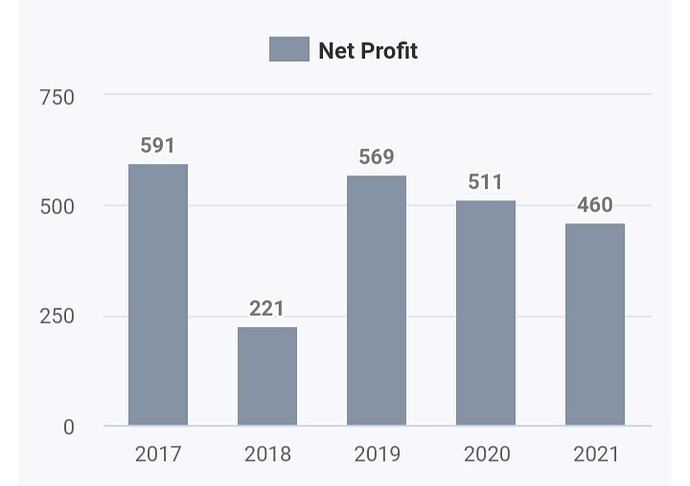Hey everyone. This is my first post here, so please let me know if I’m chasing down the wrong things. I’ve had my eye on BCM for a while and have a bit of knowledge about the inner workings of the industry - while I initially preferred Dhampur for their successful ( I believe ) non-commodization of their sugar, I am now convinced that their operating efficiency is quite a few tiers below Balrampur’s.
Balrampur Chini Mills
Foreword
The Indian sugar industry has been a peak cyclical performer. Their volatility across cycles has historically been extremely high barring a few steady performers. This is caused by the relative hardiness and efficient growth of sugarcane as a crop, which leads to a large number of farmers around Uttar Pradesh and Maharasthra largely relying on it as a flagship crop. Add to this an excessively high FRP (Fair Remunerative Price) set by the government to assure farmers of a good return, and you have the makings of an economic glut. Massive oversupply nearly every year would depress sugar prices significantly, and reduce the selling prices of sugar below the farm-gate acquisition prices of the raw produce. It proved an extremely expensive strategy as massive sugar mills owned by corporate behemoths went under, and had to take on massive debt and increase capex to simply accomodate enough capacity to crush large volumes of cane- just to gain SOME measure of profit. Margins faced so many downward pressures that it averaged around 2-5% gross for some of the better companies. Even today we have inventories of around 9 million tonnes gestating.
However, this all stands to change owing to the massive shift in industry dynamics and an intense commodity upcycle following the supply-chain disruptions from the trade cessations during the COVID pandemic. In short, one of the primary byproducts of sugar production- i.e, Ethanol, is set to become the lifeblood of the sector. This is due to two reasons:
A) The Indian government is looking to reduce dependence on oil imports and consequent revenue outflows and debt payments from oil bonds. Essentially, they want India to use less oil and one of the ways to do that is by fuelling commercial and personal vehicles using a 20:80 blend of ethanol to petrol, instead of petrol alone. This lowers fuel efficiency infintesimally while reducing prices significantly. The Government has hastened forward the 2030 target for ethanol blending, to 2024 instead. Therefore, while the Ethanol industry produces around 3.55 billion litres, the actual amount NEEDED now is close to 10 billion, or a 3X increase. Add that to an already booming commodity cycle causing higher ethanol prices, and we can conclude that sugar companies manufacturing ethanol will see a lot of demand and a lot of profits. And given that Ethanol has margins of 20-40% and is largely independent of crude oil prices , this will definitely be a massive tailwind.
B) The government has passed two liberalizing measures. Firstly, sugar companies are now allowed to divert upto 100% of sugarcane to producing ONLY ethanol and no sugar at all. This will increase sugar prices and also increase profits as ethanol naturally has better margins than sugar. Secondly, the price of ethanol from B-Heavy Molasses - which is one of the ways of producing ethanol from the sugarcane stock, and by far cheaper than its higher quality counterpart - has increased significantly, which will help the companies that do not have high alcohol production capacities as well. Currently the ethanol producing capacity across the country is 425 crore litres and it will have to go upto 1400 crore litres by 2025. Therefore demand is there, supply is what has to catch up. This is such a massive driving force behind the industry that, it will force the industry to reduce sugar production, increase distilleries, reduce and normalize inventories all without even needing excess export subsidies.
The Sugar year starts from 1st October so it is likely to be a while before we see results, but the potential heightening in profits could get baked into the price by around year-end.
In addition, sugar prices are expected to not drop anytime soon as sugar productions in India decline, and bad weather in the world’s largest sugar exporter, Brazil, causes a shortage in production that will ATLEAST last until next year. MSP of sugar is likely to face hikes as well, partly so that mills can clear farmers’ dues.
So all things considered, it looks like a good year for sugar production. A lot of Sugar manufacturers including Shree Renuka and Bajaj Hindustan have seen massive surges in share price this year already. However there is a very simple reason to avoid betting on them over Balrampur or Dhampur.
A company’s worth is determined by its free cash flow, earnings, and assets. Shree Renuka has been generating hundreds of crores in losses every year since 2016, and they are debt-laden. Bajaj Hindustan has similiar statistics, as does Dalmia Bharat. Their debt is incredibly high, they are constantly in the news for defaulting on payments to farmers, and the rise in share price in them can only be attributed to retail frenzy over a ‘cheap’ stock that announced that they are going to increase ethanol production capacity. The issue is, if you are going to increase production capacity, you need either cash or debt, and massive amounts of it. These companies have little to no cash (Shree Renuka is so indebted its shareholder equity is actually negative), so they would have to fund their capital expenses through MORE debt.
So, yes, they may show increased revenues in the meantime- but one bad quarter, one point increase in long term interest rates, and they go into losses, the growth story collapses, FPIs and Retail Investors pull out money, and the stock plummets. Ofcourse that might not happen, but the risk-to-reward for most companies is simply not favourable owing to their precarious financial standing.
Why Balrampur Chini
-
Most efficient and integrated sugar company in the sector, profitable in 19 out of 21 years since operation. Second largest sugar mill in the country, 45 years of being in business.
-
Low debt to equity at around 40%. High liquidity at 1.63. Both of which are bottomline accretive. Interest coverage at 16 is 3x greater than industry standard. Even Dhampur Sugar has >1.5x debt to equity and that is one of the best in the market.
-
Consistently maintained RoCEs of >20%. Never dropped below 20 in the last 6 years even past the FRP hike, and the liquidity crisis of 2018.
-
Digitally fitted out, SAP-based administration.
-
Global deficit is causing firm international prices. OGL exports (subsidy-less) are being done on the back of strong demand. So it is expected that Balrampur will be able to take advantage of this.
-OMCS have contracted close to 320 crore litres of ethanol, which is 70% greater than SY20-21. Which would mean quarter on quarter ethanol sales are likely to grow significantly and increase bottom line.
-B-Heavy molasses (sugar destruction route) will be primarily driver of their revenues from Ethanol. This is good as it is cheaper to produce than A-grade and of better quality (and thereby commanding a higher price) than C-grade.
-Huge increase in exports, from 3.9 million tonnes in 2019 to 6.8 million tonnes around for the SY 20-21
-
Lost some crops in FY20-21 due to diseases. Removed CO-238 variant which was prone to red rot, and still kept realization numbers at 11.78%(only 10bps lower than last year)
-
Have net zero cane arrears, as they owe 180CR on cane dues but ARE owed around 253 CR by the government discoms for power generation and export subsidies. This is a big deal, because UP mills are notorious for not paying the farmers in time after having bought their sugarcane, and thus go into arrears.
-Hoping for slightly higher yields, offset by higher sacrifice (AKA diversion into making ethanol instead of using to make sugar) and consequent increase in production of ethanol without increasing sugar inventory by much.
-Average selling price of power per unit is 3.17, cost is 2, margins greater than 60%. As Balrampur co-generates power by burning molasses, it forms a minor part of revenue but a large portion of bottomline
-Lowering working capital significantly year on year, already down 50% from peak periods pre-2018. This is bottomline accretive.
-Expecting to raise 220CR in debt, to finance the distillery expansion in FY22, which will payoff by FY25 around, and thus will add around 20-30% to finance costs, which should be offset by >20% EBIT margins on Ethanol. So this is not as negative a point as it may initially appear. Expect to generate 600CR per annum from that plant so even at half that they are atleast making back their money the very first financial year the plant opens.
- It appears they are more focussed on generating cash than simply showing revenue growth. This is evidenced by lower sales in October-December quarter where they took on cash credit rather than sell in an overcrowded, low-price market. This is also evident simply by looking at the statistics: BCM has generated 3x more cash than its nearest competitors, over the last 10 years. This is great. It has so much cash that its distillery expansion is only half being funded by debt; the rest is its own money.
-It will have 840 kilo litres per day of production capacity in ethanol, which is one of the best in the market. Plus since it’s funded only half by debt, it’s RoI is better than any other firm’s.
-They are diverting >60% of cane towards ethanol generation. This will be bottomline accretive.
5 Year Financials
Revenue growth
PAT Growth
Earnings per Share Growth
Source:
Important to note: the firm has been profitable nearly every year since operation. Its track record is enviable among its peers.
Risks
-
The new economy necessitates driving a majority of sugarcane stock towards ethanol procurement, almost all of which will be done by the Government through OMCs. If the Government suddenly decides to scale back its quota, or asks the OMCs to procure less ethanol, a lot of capex might be rendered useless.
-
BMC’s competitors are investing more into capex than expected. Shree Renuka Sugar, though loss making over the last 5 years,is raising debt to increase ethanol capacity to 145000 klpd, which is around 55% higher than BMC will have. If Shree Renuka erodes market share away from BMC, revenues could fall.
-
The recent tussle with Red Rot in some of the sugarcane stock under their command area shows that even resistant varieties of cane can contract diseases. This reduces yield and realisation percentages and can significantly reduce amount of sugar produced.
-
Repeated hikes in FRP or farm gate prices ( the price the company has to pay the farmers to purchase the cane ) can cut into margins. An FRP hike of around INR 10-15 is expected in the next quarter.
Conclusion
Balrampur Chini is an industry leader, with a large and expanding distillery segment, in an economic climate wherein massive capacity expansion will be the primary driver of revenue, since demand from OMCs is only likely to increase every year until present capacities are more than doubled. As the forerunner and the most profitable firm in the space, BCM stands to benefit at the lowest cost among its peers.Yes,the company, much like everything else in the sugar space, has skyrocketed in price already. But a closer look tells us it is only valued at a 15 TTM PE, whereas its much more unprofitable, cash-negative peers are trading around 16. This, combined with the ethanol economy, gives me confidence on a longer term success story.
Most of the numbers mentioned here are from the company’s Annual Report, and the Q4 FY21 con calls. If needed I can post a link to it.
Disclaimer : Invested




